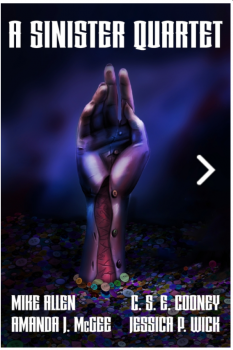 Where the Veil Is Thin, an anthology of original stories where humans run afoul of faeire-like creatures (or sometimes, faeries run afoul of humans), is a project of my heart, and I’m so pleased that it began to show up on bookshelves—at least, virtual ones—earlier this month! It is a project that was years in the making.
Where the Veil Is Thin, an anthology of original stories where humans run afoul of faeire-like creatures (or sometimes, faeries run afoul of humans), is a project of my heart, and I’m so pleased that it began to show up on bookshelves—at least, virtual ones—earlier this month! It is a project that was years in the making.
And it almost didn’t happen.
Back in 2017, the publisher of the company now folded into Outland Entertainment approached me with an idea. He and his wife loved fairy stories, he said; what would I think about doing an anthology of original stories based on the Seelie and Unseelie courts? I liked the idea, but I wanted to go one better; I didn’t want to limit our tales to the Celtic tradition of Seelie and Unseelie. What would an anthology look like if it reached into different parts of the world, with stories from authors who wouldn’t just retell tales from a European tradition? I was excited about the idea of pairing tales that could feature fox spirits or boo hags with the types of stories and fairies I was more familiar with.
I didn’t want to do it alone, so I reached out the Cerece Rennie Murphy, whose work I had deeply admired on the website Narazu. The mission of Narazu is to bring the best of Indie Sci-Fi to a wider audience, and to celebrate the cool works that indie writers and artists are creating. Cerece was interested in the idea, and we started hashing out plans.
And then the publishing company where we’d started the idea fell apart. It closed its doors in November 2017.
After some maneuvering, Outland Entertainment decided to keep moving forward on the anthology, and Cerece agreed to stick with the project. We started reaching out to authors, some that Cerece knew, some I had worked with before on other projects, some recommended to us by other contributors. We planned to line up the writers and have all their stories completed by July 2018, when we would launch the anthology.
The best plans, however, were a bit ambitious. Outland Entertainment already had two anthologies slotted for 2018, and because we were a new company at putting together anthologies and fulfilling their Kickstarters — not to mention completing some projects that the previous publisher had left unfinished — we had no idea we’d bitten off more than we could chew. Eventually, Outland released two really fantastic anthologies from those 2018 Kickstarters, which I was excited to help edit, but it took a long time.
…
Read More Read More


 Ah, Horror in the time of Covid! It seems almost superfluous, like a feather boa on an ostrich.
Ah, Horror in the time of Covid! It seems almost superfluous, like a feather boa on an ostrich.






